What is cavitation in a mud centrifugal pump?
Mar 21, 2025
The cavitation of the mud centrifugal pump in oil drilling refers to the phenomenon that during the oil drilling process, when the local pressure inside the mud centrifugal pump is lower than the saturation vapor pressure of the mud at the current temperature, the water in the mud vaporizes to form bubbles. These bubbles quickly condense and burst when they flow with the mud to the high-pressure area, resulting in a series of harmful effects.
Ⅰ. Causes of Cavitation
Installation aspects: If the installation height of the pump is too high, the pressure at the pump inlet will decrease. When it is lower than the saturation vapor pressure of the mud, cavitation is likely to occur; if the resistance of the suction pipeline is too large, such as a long and slender pipeline, many bends, a small diameter, or blockage, it will lead to a decrease in the inlet pressure and trigger cavitation.
Operation parameter aspects: If the flow rate is too large, exceeding the designed flow rate of the pump, the flow velocity at the impeller inlet will increase, and the pressure will decrease, increasing the possibility of cavitation; if the mud temperature is too high, the saturation vapor pressure of the mud will increase, and it is more likely to reach the saturation vapor pressure and vaporize under the same pressure conditions.
Mud property aspects: The properties of the mud, such as density, viscosity, and gas content, affect the occurrence of cavitation. For example, mud with a high gas content is likely to form bubbles inside the pump, increasing the risk of cavitation; too high viscosity will make it difficult for the mud to be sucked in, resulting in a decrease in the inlet pressure.
Ⅱ. The cavitation of the mud centrifugal pump can be judged from the following aspects:
Sound judgment
Noise generation: When cavitation occurs, due to the formation, development, and bursting of bubbles, irregular noise will be generated, and the sound will increase with the aggravation of the cavitation degree. This noise is significantly different from the normal operation sound, and it can be initially judged whether there is cavitation by listening carefully.
Abnormal vibration: Cavitation will cause the vibration of the pump body because the impact force generated by the bursting of bubbles will make components such as the impeller and the pump casing subject to uneven forces. By touching the pump body or using a vibration monitoring instrument, it can be found that the vibration amplitude of the pump increases significantly, and the vibration frequency will also change. Compared with the stable state during normal operation, the vibration during cavitation is more intense, and sometimes the entire pump device can even be felt shaking.
Performance change judgment
Flow rate decrease: Cavitation will cause the fluid flow inside the pump to be obstructed. The bubbles occupy a certain space, reducing the effective flow area of the mud, thus resulting in a decrease in the flow rate. If it is found that the actual flow rate of the pump is significantly lower than the rated flow rate, and other possible causes, such as pipeline blockage and the valve not being fully open, have been excluded, the possibility of cavitation needs to be considered.
Head decrease: Cavitation will damage the normal working state of the impeller, reducing the impeller's ability to do work on the mud, and thus leading to a decrease in the head. When the outlet pressure of the pump is significantly lower than the normal operating pressure and the head cannot meet the system requirements, cavitation may be one of the reasons.
Efficiency decrease: During the cavitation process, due to the formation and bursting of bubbles, energy will be consumed. At the same time, the flow state of the fluid becomes disordered, resulting in a decrease in the overall efficiency of the pump. If it is found that the energy consumption of the pump increases, but the output flow rate and head do not increase accordingly, or even decrease, it is very likely that cavitation has occurred.
Appearance inspection judgment
Impeller surface damage: Regularly disassemble the pump for inspection. If there are pits, honeycomb-like depressions, or wear marks on the impeller surface, especially at the inlet and leading edge of the blades, it is likely caused by cavitation. With the development of cavitation, these damages will gradually expand, and in severe cases, it may even lead to the perforation or fracture of the impeller blades.
Inner wall damage of the pump casing: When inspecting the inner wall of the pump casing, if there are similar cavitation marks, such as local wear, scratches, or small-area peeling, it also indicates that there may be a cavitation problem with the pump. Especially in the area near the impeller outlet and the volute tongue, due to the large pressure change here, cavitation damage is more likely to occur.
In addition, it can also be judged by observing the vacuum gauge installed at the pump inlet and the pressure gauge at the outlet. If the reading of the vacuum gauge increases abnormally, and at the same time, the reading of the pressure gauge decreases abnormally, this may also be a sign of cavitation, because cavitation will lead to a decrease in the pressure at the pump inlet and unstable pressure at the outlet.
Ⅲ. Cavitation has a significant impact on the service life of the mud centrifugal pump, mainly reflected in the following aspects:
Centrifugal pump impeller damage: When cavitation occurs, the bubbles burst near the impeller surface, and the generated impact force will continuously erode the impeller. In the initial stage, pits will appear on the impeller surface. As cavitation intensifies, the pits gradually expand and connect into honeycomb-like depressions, causing the material on the impeller surface to fall off, resulting in the thinning, perforation, or even fracture of the impeller blades, seriously damaging the structural integrity and hydraulic performance of the impeller, and greatly shortening the service life of the impeller. An impeller that could originally be used for several years may need to be replaced within a few months or even a shorter time due to severe cavitation.
Centrifugal pump casing wear: The bubbles generated by cavitation will also burst inside the pump casing, causing impact and erosion on the inner wall of the pump casing, resulting in wear, scratches, and depressions on the inner surface of the pump casing, reducing the strength and wear resistance of the pump casing. Under the long-term effect of cavitation, cracks may appear in the pump casing, affecting its sealing performance and pressure-bearing capacity, and thus shortening the service life of the pump casing, which requires early repair or replacement.
Pump shaft failure: The vibration and unstable fluid flow caused by cavitation will make the pump shafts bear additional loads and alternating stresses. This will accelerate the wear of the shafts, leading to an increase in the clearance of the shafts and a decrease in precision, and then triggering faults such as shaft heating and seizure, greatly shortening the service life of the shafts. The original normal service cycle may be several years, but under the influence of cavitation, the bearings may need to be replaced in less than a year.
Seal damage: The vibration and pressure fluctuations caused by cavitation will affect the sealing performance of the pump, subjecting the seals to additional impacts and wear. For mechanical seals, it may lead to increased wear and deformation of the sealing surface, losing the sealing effect and causing mud leakage; for packing seals, it will accelerate the wear of the packing, and frequent adjustment and replacement of the packing are required. The damage of the seals not only affects the normal operation of the pump but may also lead to the leakage of the medium, polluting the environment, and increasing the maintenance cost and downtime, indirectly affecting the overall service life of the mud centrifugal pump.
In conclusion, cavitation will damage the key components of the mud centrifugal pump from multiple aspects, significantly shortening its service life, increasing the maintenance cost and equipment replacement frequency. Therefore, during the use of the mud centrifugal pump, the cavitation problem must be taken seriously and effective preventive measures should be taken.
Ⅳ. In order to reduce the cavitation of the mud centrifugal pump in oil drilling, measures can also be taken from aspects such as optimizing equipment design and selection, improving installation conditions, optimizing operation, and strengthening maintenance management. The specific introductions are as follows:
Optimizing design and selection
Reasonable pump type selection: According to the characteristics of the oil drilling mud, including parameters such as flow rate, head, density, and viscosity, select a suitable centrifugal pump model. Ensure that the performance curve of the selected pump matches the actual working conditions, so that the pump operates in the high-efficiency area and avoids working under conditions deviating from the designed working conditions to reduce the occurrence of cavitation.
Adopting anti-cavitation design: Select impellers with anti-cavitation performance design, such as using double-suction impellers, which can make the flow velocity distribution at the impeller inlet more uniform, reduce the local pressure drop, and reduce the possibility of cavitation. In addition, optimizing the blade shape and the position of the inlet edge of the impeller can also improve the flow situation of the fluid inside the impeller and enhance the anti-cavitation ability of the pump.
Improving installation conditions
Controlling the installation height: According to the allowable cavitation margin of the pump and the actual on-site situation, accurately calculate the installation height of the pump. The installation height should ensure that the pressure at the pump inlet is higher than the saturation vapor pressure of the mud at the working temperature to prevent the formation of bubbles. Usually, the lower the installation height, the more conducive it is to avoiding cavitation, but the on-site space layout and operation convenience also need to be considered.
Optimizing the suction pipeline: Try to shorten the length of the suction pipeline, reduce unnecessary bends, valves, and other pipe fittings to reduce the pipeline resistance. At the same time, select an appropriate pipe diameter to ensure that the flow velocity of the mud in the suction pipeline is moderate, generally, it is recommended that the flow velocity be controlled between 1.5 - 2.5m/s. In addition, ensure the sealing performance of the suction pipeline to prevent air from leaking into the pipeline and avoid cavitation caused by air accumulation.
Optimizing operation
Stabilizing operation parameters: Keep the operation parameters of the pump, such as flow rate and head, stable, and avoid large fluctuations. Through reasonable adjustment of the outlet valve or the use of variable frequency speed regulation and other methods, make the pump operate near the designed working conditions. Avoid long-term operation under extreme working conditions such as small flow rate and high head or large flow rate and low head to prevent uneven pressure distribution inside the pump and the occurrence of cavitation.
Controlling the mud temperature: Too high a mud temperature will increase the saturation vapor pressure of the mud and increase the risk of cavitation. Therefore, effective cooling measures should be taken, such as setting up a mud cooler or using circulating cooling water and other methods to control the mud temperature within a reasonable range, generally, it is recommended that the mud temperature does not exceed 60℃.
Reducing the gas content of the mud: Too high a gas content in the mud will promote the occurrence of cavitation. Before the mud enters the pump, a degassing device can be used to pre-treat the mud to reduce its gas content. At the same time, pay attention to avoiding the formation of vortices in the mud tank to prevent air from being drawn into the mud.
Strengthening maintenance management
Regular inspection and maintenance: Regularly inspect the mud centrifugal pump, including the wear conditions of components such as the impeller, pump casing, and seals, and timely find and replace damaged or severely worn components. Check the pump's bearings, lubrication system, and cooling system, etc., to ensure their normal operation, so as to ensure the overall performance of the pump and reduce the impact of cavitation.
Cleaning and maintenance: Keep the pump body and the suction pipeline clean, regularly clean the filter and impurities to prevent blockage and ensure that the mud can flow smoothly into the pump. At the same time, carry out appropriate maintenance on the pump, such as regularly adding lubricating oil and replacing seals, etc., which helps to improve the operation efficiency and reliability of the pump and reduce the probability of cavitation occurrence.
Read More





 Language :
Language : English
English Русский
Русский عربي
عربي
 GET A QUOTE
GET A QUOTE

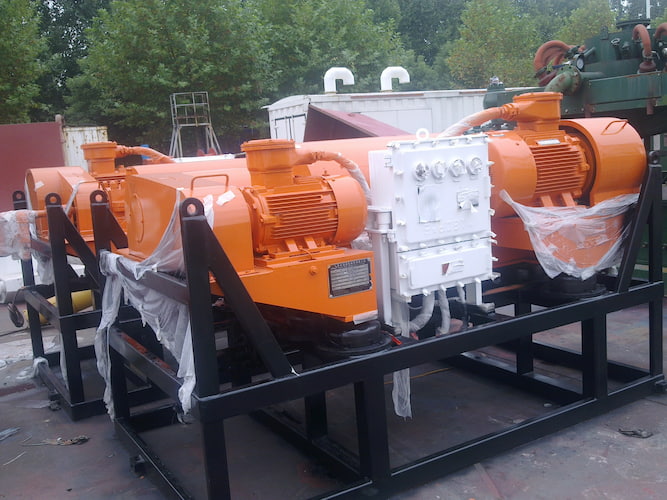
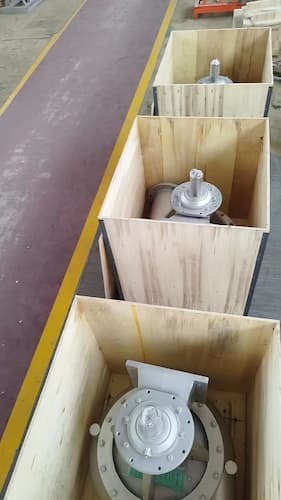
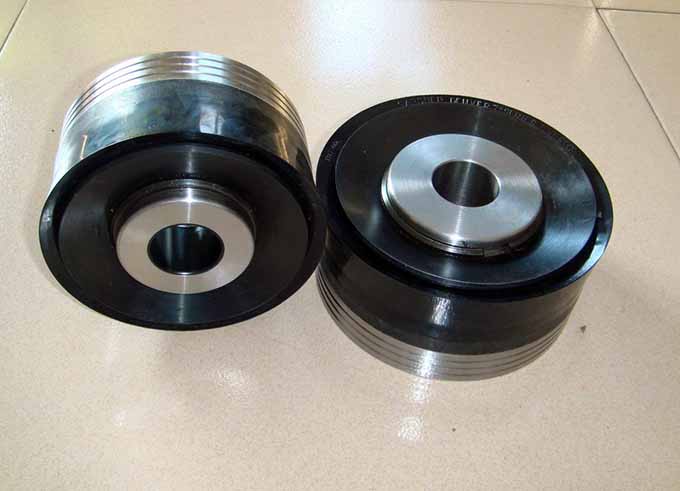
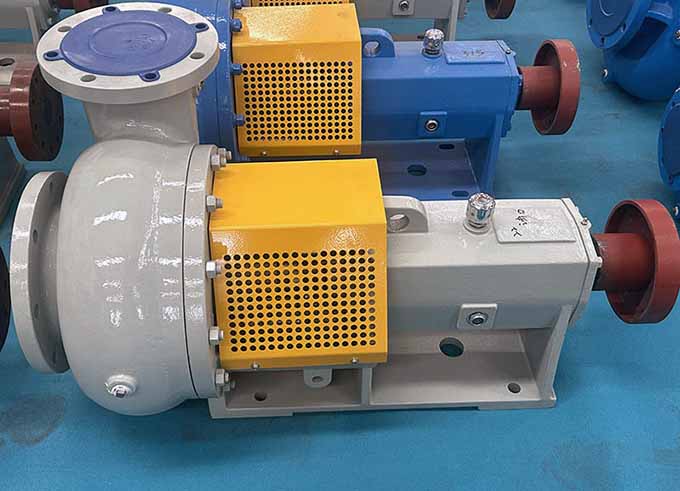
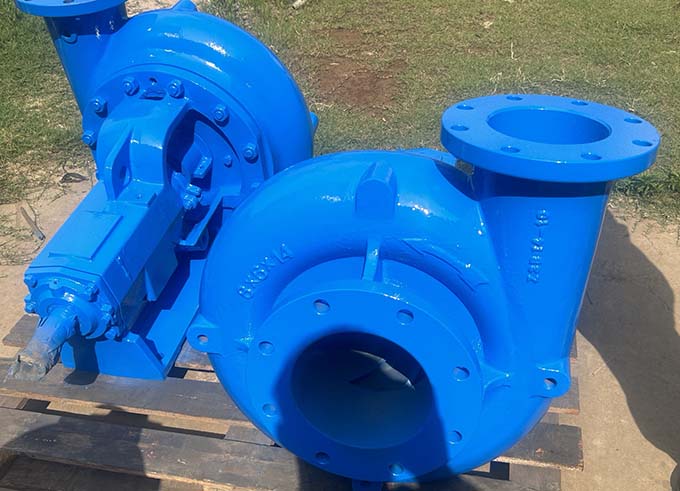

 IPv6 network supported
IPv6 network supported